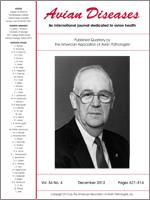The emergence of antimicrobial resistance among Campylobacter isolates recovered from turkeys has increased dramatically. Monitoring the progress of this resistance becomes a growing public health issue. The aim of the present study was to provide information of the current status of antibiotic resistance patterns in Campylobacter jejuni from turkeys. Seventy-six C. jejuni isolates were recovered from 67 epidemiologically unrelated meat turkey flocks in different regions of Germany in 2010 and 2011. The isolates were typed by flaA genotyping and were investigated for antimicrobial susceptibility against 12 antibiotics by using a broth microdilution test as well as testing the genetic determination of ciprofloxacin, tetracycline, and erythromycin resistance. All isolates (n = 76) were sensitive to gentamicin and chloramphenicol. The numbers of isolates that were sensitive to streptomycin, erythromycin, neomycin, and amoxicillin were 69 (90.8%), 61 (80.2%), 58 (76.4%), and 44 (57.9%), respectively. Only one isolate was sensitive to all tested antibiotics. The emergence of a high resistance rate and multidrug resistance to three or more classes of antimicrobial agents were observed. The resistance against sulphamethoxazole/trimethoprim, metronidazole, ciprofloxacin, naladixic acid, and tetracycline was 58 (76.3%), 58 (76.3%), 53 (69.7%), 51 (67.1%), and 42 (55.3%), respectively. None of the isolates was resistant to all antibiotics. Multidrug resistance to three or more classes of antimicrobial agents was found and ranged from 3.9% to 40.8%. Replacement of the Thr-86→Ile in gyrA gene and detection of the tet(O) gene were the main resistance mechanisms for fluoroquinolones and tetracycline, respectively, while the lack of mutation in position 2074 and 2075 on the 23S rRNA gene was responsible for macrolide resistance. The phenotypic and genotypic resistance profiles were compatible in the case of ciprofloxacin and tetracycline but were not completely congruent with respect to erythromycin.
BioOne.org will be down briefly for maintenance on 17 December 2024 between 18:00-22:00 Pacific Time US. We apologize for any inconvenience.
How to translate text using browser tools
1 December 2012
Determination of Antimicrobial Sensitivities of Campylobacter jejuni Isolated from Commercial Turkey Farms in Germany
Hosny El-Adawy,
Helmut Hotzel,
Sabine Düpre,
Herbert Tomaso,
Heinrich Neubauer,
Hafez M. Hafez
ACCESS THE FULL ARTICLE

Avian Diseases
Vol. 56 • No. 4
December 2012
Vol. 56 • No. 4
December 2012
antimicrobial resistance
Campylobacter jejuni
ciprofloxacin
erythromycin
MIC
tetracycline
Turkey




